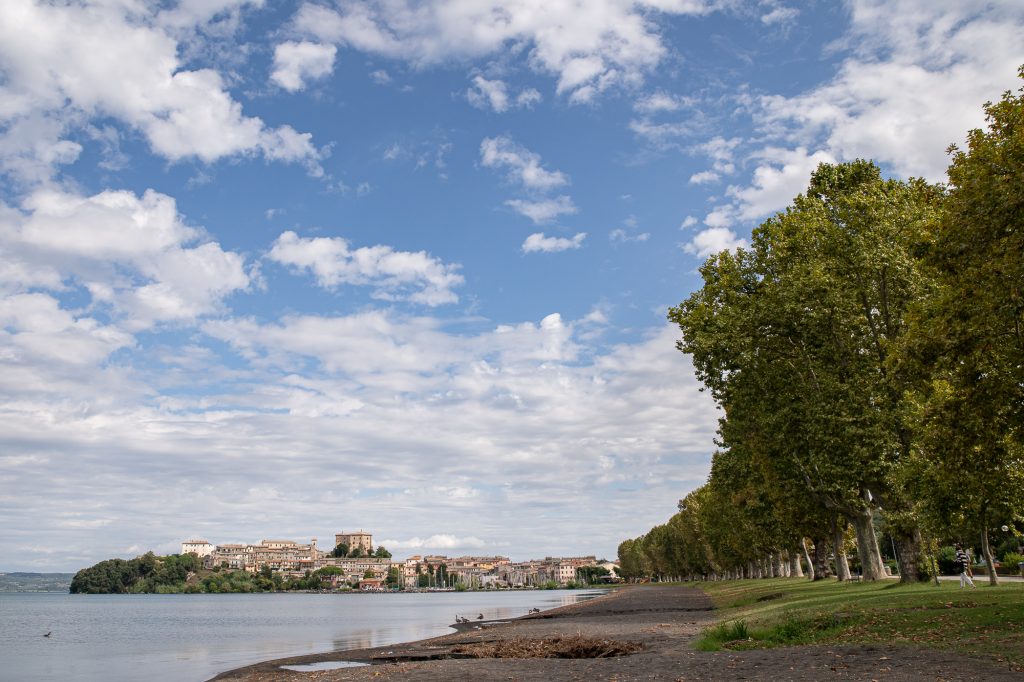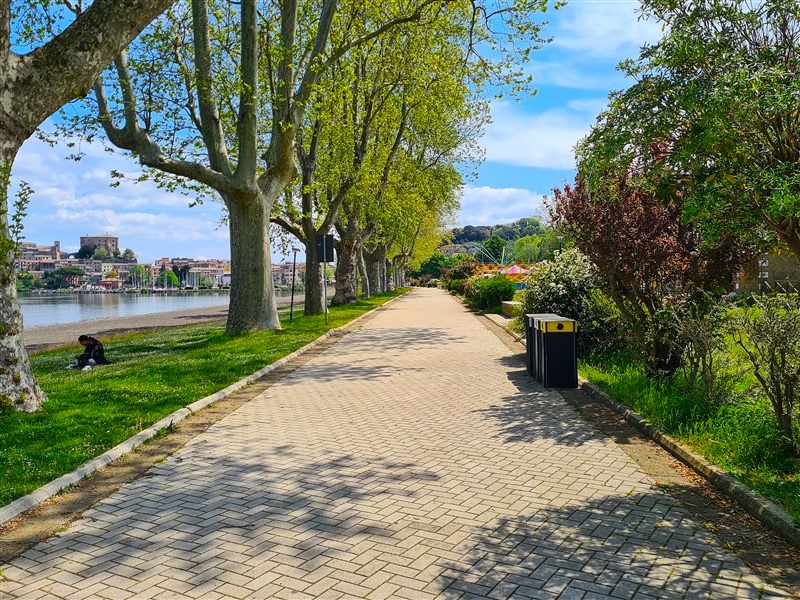- admin
- Nov, 09, 2024
- Places to visit
- Commenti disabilitati su 15. The Lakeside


Leaving the center of the village, Via Marconi leads to Viale Regina Margherita, named in honor of Queen Margherita of Savoy, who visited Capodimonte on April 15, 1903. This avenue runs alongside the enchanting beach of Capodimonte, known as “le Pioppe,” which stretches for over two kilometers along the southern shore of the lake. A large public green area called “La Bannita” is lined with tall and lush poplars, elms, linden trees, and large plane trees (planted in the early 1900s), providing a welcome shade for vacationers during the hot summer months.
This beautiful and extensive tree-lined avenue was already mentioned in some 15th-century chronicles. Pope Pius II, in his Commentarii recalling his visit to Capodimonte in 1462, appreciated the delightful shade it offered to passersby during the summer. The Podestà Benedetto Zucchi also praised its beauty in 1630: “There is a wide road along the lakeshore towards the west that lasts a mile, all flat, adorned here and there with willows, poplars, and mulberries, very pleasant to see; and often walking there, one can always stroll in the shade.”
The sand on the beach is dark and fine, originating from volcanic activity. Along the avenue, numerous kiosks, restaurants, bars, pizzerias, beach establishments, children’s play areas, a campsite, and rental services for boats, pedal boats, and canoes can be found. During the summer months, musical evenings and various events enliven the stay of tourists and vacationers.
In the other seasons, when vacationers have departed, the residents of Capodimonte can enjoy the tranquility of the area and admire the enchanting colors of the lake while strolling along the winding pathway. Walking or cycling along this long promenade, one may encounter a magnificent colony of Canadian geese, which, although not native to the region, have found an ideal habitat here. This species, originally from Canada, was introduced to Europe between the 16th and 17th centuries to satisfy the exotic tastes that permeated the continent during that time.
Every evening at sunset, the geese take flight to roost elsewhere, and those fortunate enough to witness this spectacle can enjoy the unique sight of their low flight, accompanied by the powerful rustle of their large wings.